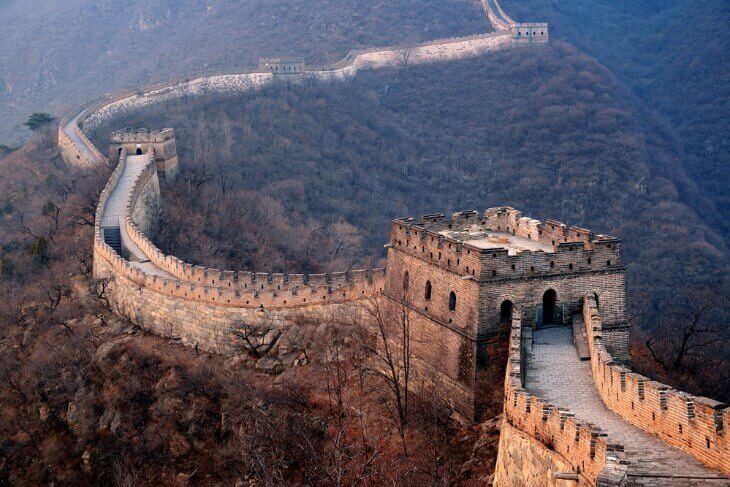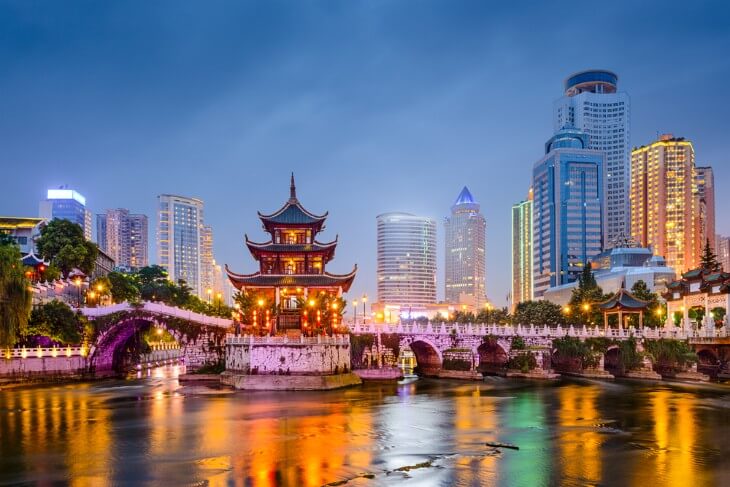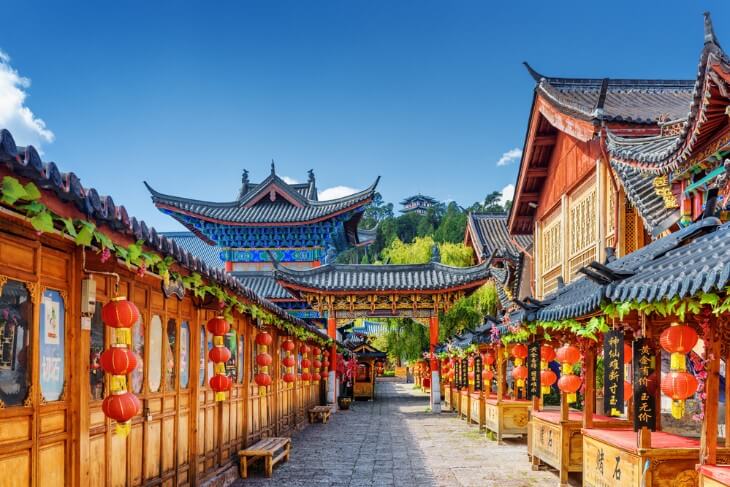- A Deep Dive into the Enduring Influence of China on Hawaiian Culture
- From the Middle Kingdom to the Sandalwood Mountains: The History of Chinese Immigration to Hawaii
- A Culinary Fusion: How Chinese Flavors Shaped Hawaiian Cuisine
- Weaving into the Social Fabric: Chinese Traditions and Customs in Hawaiian Life
- Echoes of Ancient Wisdom: The Influence of Chinese Religious and Philosophical Beliefs
- Pioneers of Progress: Chinese Contributions to Hawaii's Economic Development
- Whispers Across Languages: Linguistic Influences of Chinese on Hawaiian
- Bridging Artistic Worlds: Cultural Exchanges Between China and Hawaii
- Conclusion: A Rich Tapestry of Shared History
- Sources:
A Deep Dive into the Enduring Influence of China on Hawaiian Culture
Hawaii, a breathtaking archipelago in the heart of the Pacific, is renowned for its unique blend of indigenous traditions and the vibrant cultural tapestry woven by generations of immigrants. Among the many groups that have contributed to this rich heritage, the Chinese occupy a significant place, their history in the islands stretching back over two centuries. This exploration delves into the multifaceted influence of Chinese culture on Hawaii, examining its historical roots and its lasting impact on various aspects of island life.
From the Middle Kingdom to the Sandalwood Mountains: The History of Chinese Immigration to Hawaii
The story of Chinese immigration to Hawaii is a long and complex one, beginning well before Hawaii became a U.S. territory. While popular focus often rests on Chinese communities in major mainland cities, Hawaii holds a distinctive position in the history of Chinese migration to the United States. In fact, Chinese individuals arrived in Hawaii before they ever set foot in California. Historical records indicate the earliest presence of Chinese in Hawaii dates back to the late 18th century. A few sailors accompanied Captain James Cook in 1778, with more arriving in 1788 with John Meares and in 1789 with American trader Simon Metcalfe. By 1794, Captain George Vancouver reported observing at least one Chinese resident in the Sandwich Islands. This early presence, though small, marked the beginning of a continuous connection between the two shores. The bicentennial celebration in 1989 commemorated over two centuries of Chinese history within the Hawaiian Islands.
A significant chapter in this history unfolded with the sandalwood trade, which flourished between 1792 and around 1843. King Kamehameha I encouraged this trade with China, leading to the export of this fragrant timber. As a result, the Chinese referred to the Hawaiian Islands as "Tan Heung Shan," meaning "Fragrant Sandalwood Hills" in Cantonese. This early economic exchange laid a crucial foundation for future interactions.
The mid-to-late 19th century witnessed a substantial increase in Chinese immigration, primarily driven by the growing demand for labor on Hawaii's burgeoning sugar plantations. The end of legal slavery across the West in the mid-19th century created a need for alternative labor sources, and Chinese indentured servitude became a viable option. Political turmoil and economic hardship in South China, particularly the aftermath of the Taiping Rebellion (1850-1864), further encouraged individuals to seek opportunities overseas. Hawaii, with its developing sugar industry, presented an attractive prospect for these sojourners. The first large group of contract laborers, approximately 200 men, arrived in 1852 to work on plantations in Kauai and Maui. Between 1852 and 1899, around 46,000 Chinese immigrated to Hawaii. While many intended to return to China after their contracts expired, a significant number decided to remain in Hawaii. By 1900, the Chinese population in Hawaii stood at 25,767.
As their labor contracts concluded, many Chinese immigrants transitioned from plantation work to establishing businesses in towns like Hilo and Honolulu. This period saw the emergence of distinct Chinese communities, most notably the Chinatowns that developed in urban centers. While these areas were not exclusively Chinese, they served as vital nuclei for Chinese commerce, cultural activities, and the formation of social organizations based on kinship, friendship, profession, and religion. These organizations provided crucial mutual aid and helped preserve cultural ties for the immigrant community. Interestingly, a unique group of early Chinese settlers, primarily sugar manufacturers, had established themselves in Hilo even before the major influx of contract laborers in 1852. These "sugar masters" often married Hawaiian women, sometimes of high rank, and became permanent residents, deviating from the typical pattern of overseas Chinese migration.

A Culinary Fusion: How Chinese Flavors Shaped Hawaiian Cuisine
The arrival of Chinese immigrants brought with it a rich tapestry of culinary traditions that profoundly influenced the development of modern Hawaiian cuisine. Primarily hailing from the Cantonese region of Southern China, these early settlers introduced distinct flavors, dishes, and cooking techniques to the islands. Cantonese cuisine, with its emphasis on fresh ingredients and diverse preparations, laid a significant foundation for the unique culinary landscape of Hawaii.
One of the most notable contributions was the introduction of the first stir-fry dishes, sweet and sour flavors, and the art of dim sum to the islands. The Cantonese char siu bao, a steamed bun filled with barbecued pork, evolved into the beloved Hawaiian snack known as manapua. Another iconic dish with Chinese roots is saimin, a flavorful noodle soup that incorporates elements of Japanese ramen and Filipino pancit, but its origins can be traced back to Chinese mein. Even a dish like "Hanover cake noodle," found uniquely in Hawaii, has its origins in the culinary traditions of Guangdong.
Beyond specific dishes, Chinese immigrants also brought key ingredients that significantly altered the Hawaiian diet. Rice, a staple in Chinese cuisine, gradually replaced poi, made from taro, as a primary carbohydrate source for many in Hawaii. They also introduced a variety of new herbs and spices, enriching the flavor profiles of local cooking. Furthermore, Chinese rice growers even imported familiar fish varieties from Asia to stock local streams and irrigation ditches, further diversifying the available food sources. The popular condiment li hing mui, a salty dried plum, is another significant contribution from China, now widely used in Hawaii on everything from candies to shave ice. The technique of stir-frying, a cornerstone of Cantonese cooking, was readily adopted and integrated into Hawaiian culinary practices, offering a quick and versatile method for preparing meals.
Weaving into the Social Fabric: Chinese Traditions and Customs in Hawaiian Life
The influence of Chinese culture extends beyond the kitchen and into the very fabric of Hawaiian social life. Over generations, many Chinese traditions and customs have been integrated into the islands' diverse cultural landscape, often embraced and celebrated by people of various ethnic backgrounds.
Chinese celebrations and festivals have become deeply embedded in Hawaiian social life. The Lunar New Year, also known as Chinese New Year, is perhaps the most widely recognized and celebrated, marked by vibrant traditions such as the giving of lai see, red envelopes containing cash for good luck, and the consumption of gao, sweet rice cakes symbolizing growth and progress. Lion dances, believed to ward off evil spirits and bring good fortune, are a common sight during these festivities. The Lantern Festival, observed on the 15th day of the Lunar New Year, is another cherished tradition. Additionally, the Ching Ming Festival, a time for honoring ancestors by visiting and cleaning their graves, and the Mid-Autumn Festival, celebrated with mooncakes and lanterns to admire the full moon, are also observed by the Chinese community in Hawaii. Uniquely Hawaiian is the Narcissus Queen Pageant in Chinatown, a spring-season-long celebration that originated in connection with Lunar New Year and has evolved to include banquets, fashion shows, and community events.
The structure of families in Hawaii has also seen influence from ancient Chinese traditions. The emphasis on respect for elders, filial piety, and the hierarchical roles within the family, rooted in Confucian values, were brought over by the early immigrants and continue to shape family dynamics in many households. Customs connected with family practices, particularly in religious and memorial observances, such as remembering ancestors during New Year and showing respect at births and marriages, are still prevalent. Even seemingly small gestures, like serving tea to elders with candied fruits during Chinese New Year to wish them a sweet life, underscore the enduring importance of filial piety.
Echoes of Ancient Wisdom: The Influence of Chinese Religious and Philosophical Beliefs
The spiritual and philosophical landscape of Hawaii has also been shaped by the beliefs brought by Chinese immigrants. Prior to the arrival of Christian missionaries, the early Chinese settlers were adherents of Buddhism, Taoism, and Confucianism. In some instances, these traditional Chinese beliefs even intertwined with aspects of native Hawaiian spirituality, indicating a degree of cultural exchange in the realm of faith.
While the work of Christian missionaries in the late 19th and 20th centuries led to the conversion of many Chinese in Hawaii to Protestant and Roman Catholic Christianity, the legacy of traditional Chinese religions persists. Approximately 100 Buddhist and ancestral temples remain throughout the islands. Taoism, considered the national religion of China, is still practiced, particularly among older Chinese and more recent immigrants. Chinese Buddhism was introduced to Hawaii relatively early, and temples like the Hsu Yun Temple in Honolulu stand as testaments to this presence. The Wah Kong Temple, for example, founded around 60 years ago, enshrines deities from Taoism and Chinese folk religion. It is important to note that while Chinese religious traditions took root, other East Asian faiths, particularly Japanese Buddhism, also established a strong presence in Hawaii with numerous temples.
Confucianism, while not strictly a religion, emphasizes social harmony, familial responsibility, and respect for elders. These core tenets resonate with existing values within Hawaiian culture and likely facilitated the integration of Chinese immigrants into the social fabric. The early instances of Chinese settlers incorporating elements of native Hawaiian beliefs into their own spiritual practices further illustrate a period of mutual cultural adaptation.
Pioneers of Progress: Chinese Contributions to Hawaii's Economic Development
Chinese immigrants played a pivotal role in the economic development of Hawaii, contributing significantly to various industries from the early days of their arrival. Their impact can be seen in agriculture, trade, and the establishment of diverse businesses.
Even in the early 19th century, Chinese individuals demonstrated entrepreneurial spirit. Wong Tze-Chun, for instance, is credited with establishing the first commercial sugar mill in Hawaii on Lanai in 1802, bringing with him the necessary mill and knowledge of sugar production. This early venture, though ultimately short-lived, marked the beginning of Chinese involvement in Hawaii's sugar industry. The mid-to-late 19th century saw a massive influx of Chinese laborers who became the backbone of the expanding sugar plantations. These workers endured harsh conditions but were instrumental in the growth of this vital sector of the Hawaiian economy. Beyond sugar, Chinese immigrants also contributed to rice cultivation, utilizing swampy and fallow lands to establish rice paddies, which became another important agricultural activity.
As their initial labor contracts concluded, many Chinese immigrants displayed remarkable economic mobility. They transitioned from plantation laborers to establishing their own businesses in various sectors. Chinatowns, particularly in Honolulu, became hubs for a wide array of Chinese-owned businesses, including grocery stores, retail shops, restaurants, and other specialized trades. By 1950, Hawaii-born Chinese had largely taken over the ownership and management of these businesses, demonstrating their successful integration into Hawaii's economic mainstream.

Whispers Across Languages: Linguistic Influences of Chinese on Hawaiian
The linguistic interaction between Chinese immigrants and the people of Hawaii has left its mark on the islands' languages, both the native Hawaiian language and the locally developed pidgin. While the direct influence on the Hawaiian language in terms of sheer volume of borrowed words might be relatively small, the presence of these loanwords signifies direct contact and cultural exchange.
Several Cantonese loanwords have been incorporated into the Hawaiian language. These include "konohī," which refers to Chinese New Year, derived from the Cantonese "kong-hee" (congratulations), and "pakalana," the Hawaiian name for the Chinese violet, originating from "pak-lan" (white orchid). The term "Pākē," used to refer to Chinese people, comes from the Cantonese "pak ye" (father's older brother). Interestingly, in Hawaiian creole, the word "pake" also took on the meaning of thrifty or frugal, reflecting a cultural association that developed over time. The name for a rice wine, "Kamakū," is also believed to have Cantonese origins, possibly from "samshu".
The influence of Chinese dialects, particularly Cantonese due to the majority of immigrants being Cantonese speakers, is more significantly observed in the development of Hawaiian Pidgin, also known as Hawaii Creole English. This creole language emerged on the sugarcane plantations in the 19th century as a means of communication among workers from diverse linguistic backgrounds, including native Hawaiians, English speakers, and immigrants from China, Portugal, Japan, and other countries. Cantonese contributed to the vocabulary and potentially some grammatical features of Pidgin. For example, the Pidgin word "get" functions similarly to its Cantonese counterpart, serving as both "has/have" and "there is/are". Even in earlier times, as noted in 1856, Cantonese shopkeepers and Fukienese laborers in Maui communicated using the Hawaiian language, highlighting the early multilingual interactions that paved the way for Pidgin's development.
Bridging Artistic Worlds: Cultural Exchanges Between China and Hawaii
The cultural exchange between China and Hawaii has enriched the artistic landscape of the islands in numerous ways, influencing music, dance, clothing, and other forms of artistic expression.
Chinese music and dance traditions have found a lasting home in Hawaii. Cantonese Opera, a vibrant form of traditional Chinese theater, remains a cherished art form within the Chinese community, with dedicated groups like the Wo Lok Music Club continuing to perform. The Lion Dance, a dynamic and acrobatic performance with deep roots in Kung Fu, is an integral part of Chinese celebrations throughout Hawaii, believed to bring good luck and ward off negative influences. Contemporary dance companies, such as Celestial Images, have emerged, creatively blending Chinese heritage with Western dance forms like ballet, showcasing a unique fusion of artistic traditions. While Hawaii boasts a diverse musical heritage influenced by Polynesian, Western, and other Asian traditions, the distinct sounds and performances of Chinese music continue to contribute to this rich tapestry. Furthermore, Chinese dance schools and performances, including traditional folk dances during events like Lunar New Year, actively share and preserve these art forms within the broader community.
Beyond the performing arts, Chinese artistic influence can also be seen in visual arts and fashion. Traditional Chinese arts like calligraphy, the art of beautiful writing, and seal engraving, a highly esteemed craft in China, are practiced in Hawaii, preserving these ancient forms of expression. Perhaps one of the most iconic examples of this exchange is the origin of the Aloha shirt, a symbol of Hawaiian culture. Initially appearing in the 1920s and 1930s, the early versions of this quintessential Hawaiian garment were often fashioned by Chinese and Japanese immigrant tailors using traditional Asian fabrics, including kimono silks, and incorporating beautiful motifs from these textiles. The Cheongsam (Qipao), a traditional Chinese dress known for its elegant design, has also found its place in Hawaiian fashion, further illustrating the cross-cultural influences in clothing.
Conclusion: A Rich Tapestry of Shared History
The influence of China on Hawaiian culture is profound and pervasive, touching upon nearly every aspect of island life. From the earliest encounters and the subsequent waves of immigration to the enduring impact on cuisine, social customs, religious beliefs, economic development, language, and the arts, the Chinese community has played an integral role in shaping the unique identity of Hawaii. The long history of interaction between these two cultures has fostered a rich tapestry of shared experiences, leaving an indelible mark on the vibrant and multicultural society that defines Hawaii today. The ongoing legacy of this exchange continues to enrich the islands, demonstrating the enduring power of cultural fusion.
Sources:
Lyman Museum: https://lymanmuseum.org/exhibits/archive-special-exhibits/asian-american-and-pacific-islander-heritage-month/
Chinese Historical Society of America: (https://chsa.org/wp-content/uploads/2010/12/CHSA_HP2010.pdf)
Wikipedia: https://en.wikipedia.org/wiki/Chinese_immigration_to_Hawaii
Wikipedia: https://en.wikipedia.org/wiki/Asian_immigration_to_Hawaii
George H. Balazs: (https://georgehbalazs.com/wp-content/uploads/2019/06/Chinese-people-in-Hawaii-and-The-Wo-Hin1.pdf)
University of Hawaiʻi at Mānoa ScholarSpace: https://scholarspace.manoa.hawaii.edu/items/1751a09b-652d-48b5-bebb-13874050ef39
Reddit: https://www.reddit.com/r/AskHistorians/comments/13oqpoz/what_made_hawaii_a_popular_destination_for/
CORE: https://core.ac.uk/download/pdf/5014490.pdf
American Association of Immunologists (AAI): (https://www.aai.org/About/History/History-Articles-Keep-for-Hierarchy/How-Honolulu%E2%80%99s-Chinatown-Went-Up-in-Smoke-The-Fi)
ISBE (Illinois State Board of Education): (https://www.isbe.net/CTEDocuments/FCS-700140.pdf)


